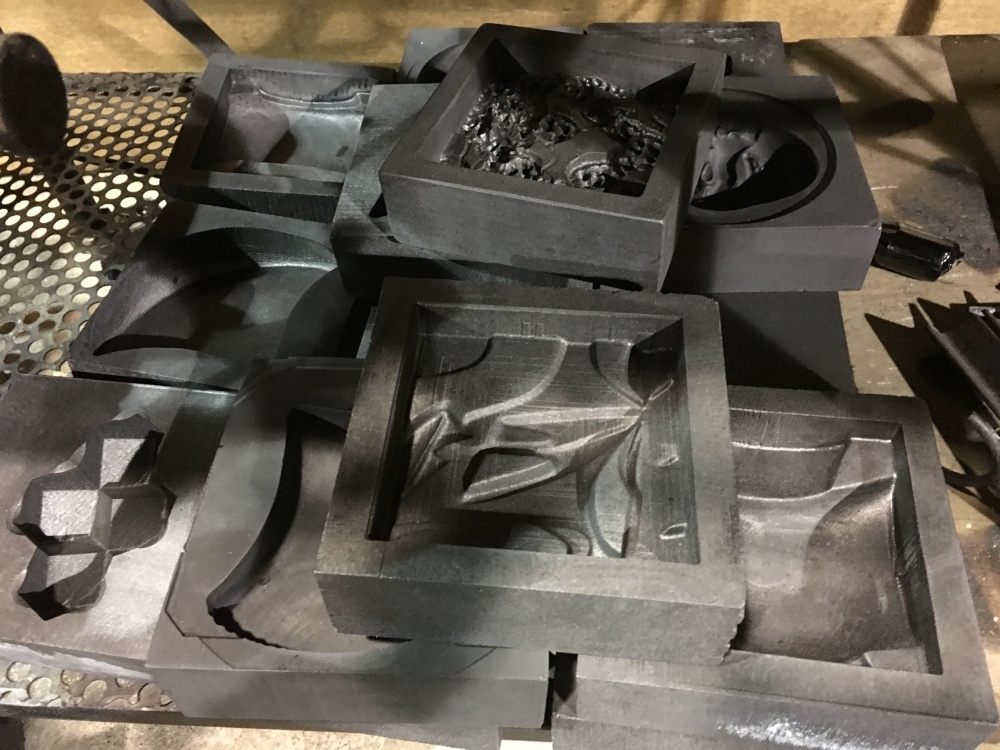This post is a follow up to a previous one about techniques that I have been exploring to transfer digital designs into cast glass objects. This began last year at a fellowship at Wheaton Arts’ Creative Glass Center of America and was expanded upon this year while teaching at Pilchuck Glass School and in a workshop at Detroit’s College of Creative Studies. In particular, I have focused on one particular technique; using a low cost desktop CNC machine to carve reusable graphite molds for glass casting multiples. There’s a few design limitations to this approach, but it is an amazingly cost effective approach to creating small to medium scale runs of custom designed glass tiles. The molds hold up for hundreds of castings, and possibly even more, so this is an exciting way of creating custom glass design objects and custom tiles for architectural applications. This will be a big focus for much of my work in 2017.
With a clean and simple design, these new geometric tiles channel the 1980’s era video game Qbert, Islamic mosaics, and leverage the material’s clarity and sparkle. I love the simplicity and the illusory way we see through the smooth top surface to see the relief texture on the backside. I am thinking this will become a set of tabletop design objects, with 6″,9″ and 11″ sizes that interlock. However, I am almost more excited to think of them as architectural tile. How cool would it be to have a wall made of these, or have them as accents embedded in concrete?
Below you will see some of this new carved graphite mold work, as well as some student work from teaching at Pilchuck this summer. Design constraints of this method center around the fact that this process does not support forms with undercuts. Likewise, the machine can only mill material up to ~2.5″ thick and can only do straight plunge cuts as long as the longest router bit you can find. For most 1/8″ bits this means you cannot do any straight cuts more than 1.5″ deep. However, because graphite is a lubricant and it pretty impervious to heat, once the moisture leaves the material after the first few casts, these molds can be used over and over again, with beautiful results. For any schools or glass studios who are looking to create such a setup, I have created a bill of materials for creating such a setup, totalling under $2500. (BTW, I am available to teach workshops! )







I’ll end with some images from the TaDDDaa!!! class at The Pilchuck Glass School this summer. It was a three week deep dive into 3D modeling, scanning, printing and CNC carving. Here’s some of the class’ work with graphite for glassmaking:















